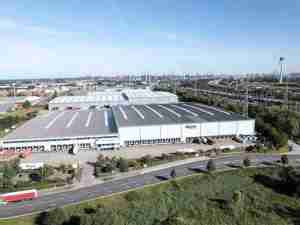Motor carrier task force meets at the Port of Virginia, outlines five areas of concern
posted by AJOT | Mar 10 2014 at 10:31 AM | Ports & Terminals
More than 20 local maritime transportation industry representatives gathered last week to begin the work of the Motor Carrier Task Force, a group focused on improving the throughput of truck freight through The Port of Virginia.
Continued volume growth that has put pressure on the motor carriers has driven creation of the task force, said John F. Reinhart, the Virginia Port Authority's CEO and executive director. The effort will be focused on safety, reducing turn times, cutting wait-time at the gates, chassis availability and regulating the daily flow of trucks to and from the terminals.
The port is enlisting the help of multiple stakeholders who gathered at the port’s main office Wednesday (March 5) to begin the effort. Representatives from the motor carrier community, service providers, the International Longshoremen’s Association, ocean carriers, shippers and US Customs and Border Protection are all participating.
The task force consists of a 10-member steering committee and five working or segmentation groups that will analyze the following areas:
1) Appointment system
2) In the terminal
3) Reefer
4) Chassis dynamics and empty yards
5) The gate
At the meeting, the steering committee was given the task force’s guiding documents that, among other things, pinpoint the five areas of concern, the team leaders, tasks, a meeting schedule, deadlines and goals. Each of the five segmentation groups will hold a minimum of three meetings by April 15, with a report due to the steering committee by April 21.
“As we go through this we will find other links in the chain that need our attention, but this, we feel, is a good starting point,” said Joseph P. Ruddy, the port's chief operating officer and task force chairman. “We are going to identify issues, develop action plans and implement real solutions: we have to get this right.”
One of the first issues the task force will address is the implementation of an appointment system on May 1 for motor carriers designed to regulate the flow of traffic at the terminals throughout the day and eliminate the “rush-hour” effect.
“As The Port of Virginia, we must commit to ensure that our freight arrives and departs safely and as efficiently as possible,” Reinhart said. “We don’t have all the answers, but it is our belief that with the help of our partners we can implement needed improvements. We must reduce congestion, improve cargo velocity and speed up truck and rail service to serve our customers.”









